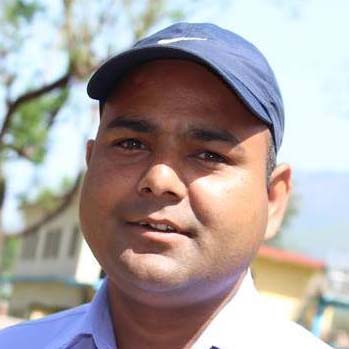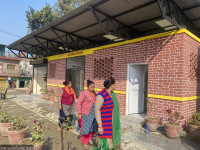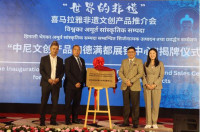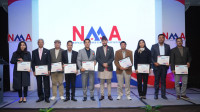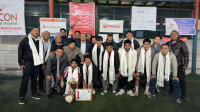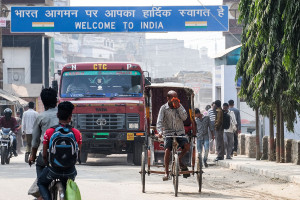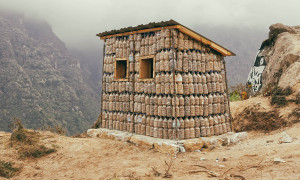Money
Rara draws tourists, but poor amenities keep them from staying longer or returning
Visitor numbers are rising, but lack of basic infrastructure and project delays have held back the area’s development.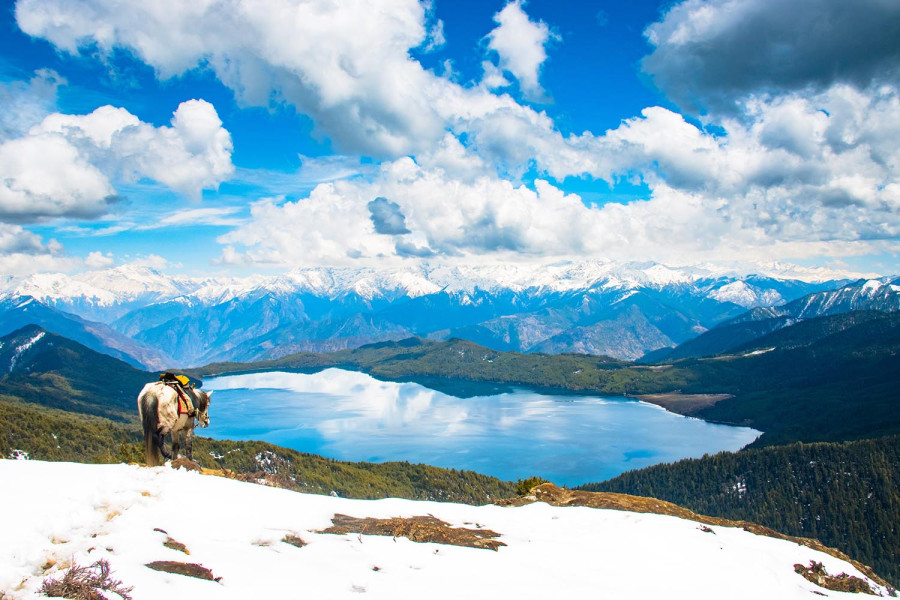
Krishna Prasad Gautam
Two weeks ago, Keshav Pokhrel from ward 2 of Ghorahi Sub-Metropolitan City in Dang district visited Rara with his family of five.
“There’s no doubt about Rara’s beauty—it mesmerises anyone who sees it,” he said. “But after experiencing the rough and risky road journey and the lack of proper accommodation and food options there, you don’t feel like coming back.”
Suraj DC from ward 6 of Birendranagar Municipality in Surkhet returned a week ago after visiting Rara with nine friends.
“Rara is a place everyone should visit at least once in their lifetime,” he said. “But there’s barely any phone network, no good hotels to stay in, and the dreadful condition of the Karnali Highway makes the journey unbearable."
Rara Lake, a major tourist destination in Karnali province, welcomed 19,457 visitors in the fiscal year 2024-25, up from 17,000 the previous year and 15,400 the year before that.
Despite the yearly increase in tourist numbers, a lack of infrastructure over the years has hindered Rara’s potential as a major travel destination.
Tourism entrepreneur Chandra Prakash Sharma says tourists face difficulties visiting Rara due to poor roads, lack of quality hotels, and the absence of services like Wi-Fi and mobile connectivity.
Although a contract was awarded for the Nagma-Gamgadhi road section, blacktopping work has not started yet. He added that blacktopping just 3.5 km of the Talcha–Salleri stretch would greatly benefit visitors.
Tourists usually trek to nearby sites such as Murmatop, Majhghat, Salleri, and Rara Lake.
“Most tourists stay here for two days. If we could connect the surrounding tourist spots, they might stay longer,” Sharma explained. “Since there are no good hotels in Rara, tourists are often forced to travel to Jumla for lodging.” He added that tourists rarely return for a second visit due to the lack of electricity, telephone, proper accommodation, and internet.
Khem Bahadur Rawal, the chair of ward 6 of Chhayanath Rara Municipality, said locals have been unable to benefit much from tourism due to budget shortages and the absence of a master plan.
“If tourists took home local products as souvenirs, locals could become somewhat self-sufficient. If youths were mobilised as guides and volunteers, they could have employment right here,” he said.
“Homestays could have also helped provide jobs for underprivileged families.”
The park collected a record-high revenue of Rs6.24 million in the past fiscal year, including Rs4.06 million from entry fees alone.
According to Mahesh Nyaupane, the park's senior conservation officer, domestic tourists are charged Rs100, SAARC nationals Rs1,500, and other foreign tourists Rs3,000.
The government established Rara National Park 49 years ago to preserve Nepal’s largest lake, Rara.
In 1975, the government evicted the Chapru settlement to declare the area a national park. About 450 families were displaced to Banke and Bardiya.
Currently, around 4,401 families are affiliated with 10 buffer zone unit committees. However, due to limited budgets and the absence of a master plan, there has been no organised infrastructure development, and locals have not reaped much benefit.
“In Pokhara, everyone—from workers to boat operators, transporters, and hoteliers—benefits from Fewa Lake,” said local resident Raj Bahadur Rokaya. “We live next to Nepal’s largest lake, but apart from being able to say that, there’s no real benefit.”
Since 2005, when air services reached Mugu, and 2012, when roads arrived, domestic and international tourists began visiting Rara. But apart from a few horse operators, boatmen, and hotel owners, most locals have not found employment.
Although there are a few big hotels around Rara, these are often unaffordable for many visitors. At the same time, homestays have not flourished due to poor infrastructure and amenities in the area.
“Tourists only stay in a handful of large hotels around Rara. We even set up homestays, but they are on the verge of closure due to the lack of visitors,” Rokaya said. “Local products haven’t found markets either. If youths had been trained and employed as tour guides, the trend of going abroad would have slowed.”
Locals complain that yearly development budgets for Rara go unused and lapse.
According to the park, around Rs80 million allocated by federal and provincial governments over the past five years for Rara's development was frozen. Four years ago, the federal government allocated Rs6 million to set up a tourist information centre and Rs8 million for observation towers around the lake—but the funds were returned unused.
Civil leader Rup Bahadur Malla said that tourists continue to suffer because the budget meant for Rara’s development is returned year after year.
“There are no proper roads or lodging for tourists,” he said. “Due to the lack of quality hotels, tourists are forced to sleep hungry in tents.”
According to Devi Krishna Rokaya, operator of Eco Resort at Murmatop, despite being part of the Greater Himalaya Trail, the geographic remoteness and lack of infrastructure prevent Rara from becoming a major tourist spot. He added that the Nepal Tourism Board allocates Rs1.5 to 2 million annually for Rara’s development, but that too gets returned unused.
Senior conservation officer Nyaupane said that funds are often allocated haphazardly without proper planning, and when they are allocated, they arrive too late in the fiscal year, which results in the money being frozen.
“If the budget for infrastructure had been used properly, we could have met at least basic needs of tourists,” he said. “In the past three years, infrastructure development has been virtually zero.”
The federal government allocates between Rs 40 and 60 million annually to the park, but nearly 60 percent of that is spent on salaries and allowances, leaving limited funds for infrastructure work projects.
Last year, Rs 20 million was allocated to construct a cycling trail around Rara.
However, due to negligence by the contractor company Shankar/Malika Nirman Sewa, only one kilometre of the trail was completed. Similarly, the provincial Ministry of Industry, Tourism, Forests, and Environment allocated Rs 2.5 million in the previous fiscal year to construct homestays, but no progress was made.
Local leader Karna Rawal said the government's neglect has left people in the buffer zone trapped in poverty. “The park does not allow construction of roads and electricity lines and this deprives locals of even basic development,” he said.
“Wild animals destroy our crops, which don’t even last three months. And, unlike in other national parks, there are no NGO initiatives here to support local livelihoods. In fact, the park has brought more harm than help.”
Rara Lake is 167 meters deep, five kilometres long, and three kilometres wide.
Suresh Adhikari, Karnali province’s minister for Industry, Tourism, Forests, and Environment, said a master plan is being prepared for Rara’s development. He said about Rs40 million has been allocated this fiscal year for infrastructure development in the Rara area.




 16.12°C Kathmandu
16.12°C Kathmandu